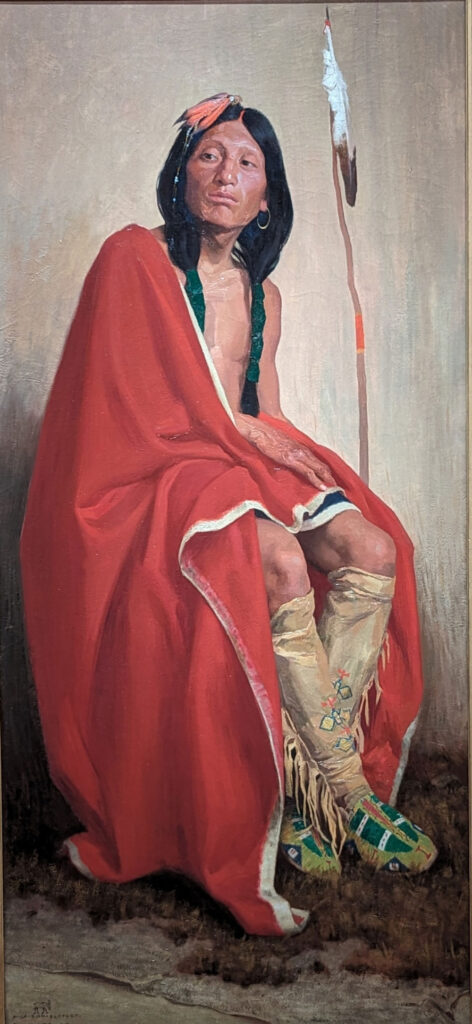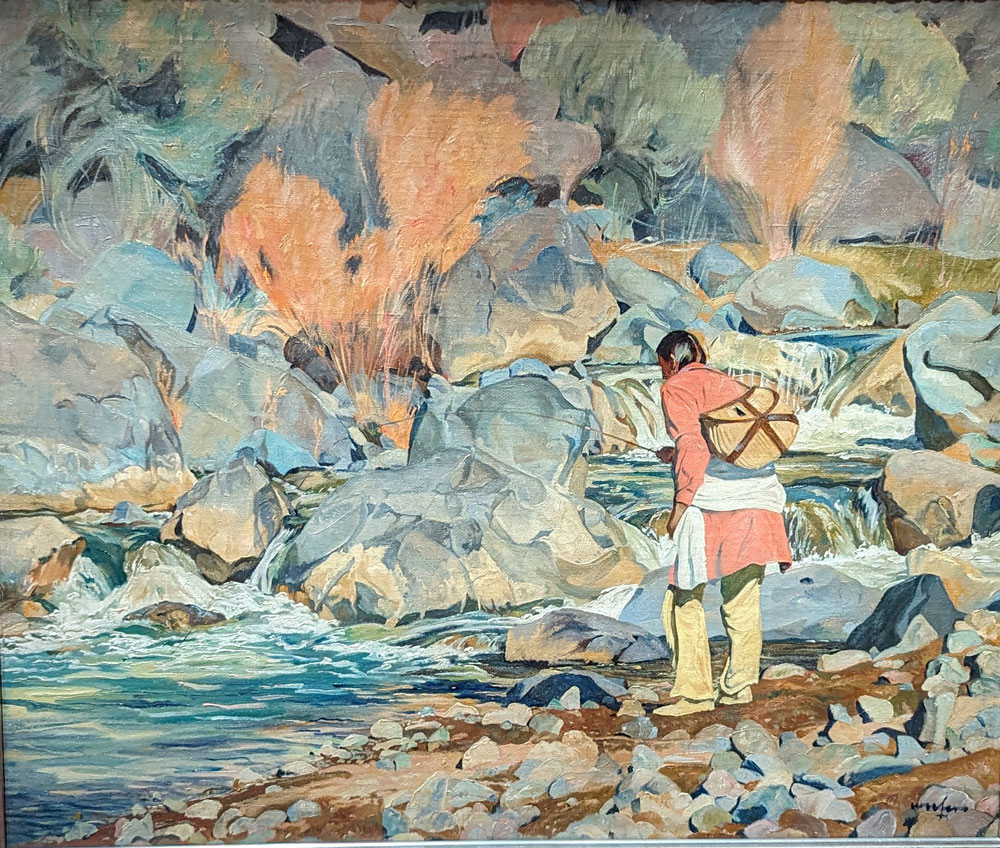
E. Irving Couse’s Elk-Foot of the Taos Tribe Smithsonian American Arts Museum – City Pleasures photography
Two arts institutions housed under the same roof in Washington DC have complementary missions. One tells the story of America by focusing on the “people who shape the nation’s history, development and culture”. The other shares the stories of our nation through arts and craft. Together, the collections of the National Portrait Gallery (NPG) and the Smithsonian American Arts Museum (SAAM) paint a detailed and elaborate picture of this grand experiment called the United States of America. An experiment that’s grown to become a dominating force on the world stage and one that’s currently stands at a crossroads. Walking through the galleries on the lower floors of both buildings is to be constantly surrounded by images of people and events that shape the country we live in today.
Many of the rooms probe deep into the aftermath of national expansion and give prominence to the people who were displaced during the push West. Neither attempting to romanticize or idealize their subjects, painters like Joseph Henry Sharp, Eanger Irving Couse and Walter Ufer preferred to create realistic depictions of Native Americans and their way of life. Most active in the early 1900s and on through the 1930s, their art coincided with political efforts to establish the territory they migrated to, New Mexico, as the country’s 47th state. The paintings they created would help to preserve cultures and civilizations that had all but disappeared in real life.

Contemporaries with a common interest in subject matter, each of these artists would eventually be drawn to the spectacular “high mountain” light of the American Southwest and become enthralled by the indigenous people in and around Taos Pueblo. Sharp was the first to discover and move to the area in 1893 with the intent using the location and its people as the chief inspirations for his art. Others followed. By 1915, Sharp, along with Couse, Ernest Blumenschein, Bert Phillips, Oscar Berninghaus and W. Herbert Dunton formed the Taos Society of Artists. They would later be joined by six more artists including Walter Ufer.
Most of them had pursued formal training in Europe in their early years. Later, they would often return there to learn techniques that would help them improve the way they depicted skin tones, represent light or achieve other objectives that moved them closer to their aesthetic ideal.
Removed from the land and forced to engage in conventional labor, most Native Americans lived anglicized existences by the 1900s. Taos artists would use individuals from the various tribes as models, dress them in traditional garb and place them in settings that recalled the days of their unrestricted autonomy. E. Irving Couse’s Elk-Foot of the Taos Tribe, completed in 1909 and considered the artist’s masterwork, shows how effectively this process bolsters the humanity of a subjugated people. The focus is on the person and the message radiating from his countenance. In Couse’s grand portrait, Elk-Foot exudes transcendent nobility and natural serenity; attributes the artist may have wished to accentuate by first carefully selecting his model. Elk-Foot, who’s said to have gone by the English name of Jerry Mirabal, was one of Couse’s favorite models because of his “physical beauty and ideal features”. His face also possesses a timeless resonance that invites respect and stimulates thoughtful curiosity.

Using a completely different approach, Walter Ufer’s After Them (1928) places man deep inside his environment; removing his personal identity and emphasizing his connection to the natural world. Fishing, with his back turned to us, Couse’s subject virtually blends into his surroundings as he concentrates on catching a meal. The artist’s Impressionist influences can be seen in the way he’s painted the landscape. By drawing his subject with greater clarity, he stands out just enough not to be lost in the patchwork of muted colors.
Henry Joseph Sharp’s Sunset Dance – Ceremony to the Evening Sun (1924) counts as another masterpiece in the way it brings the past to life. Customs and rituals define cultures. When the American government and missionaries banned ceremonies like the Sunset Dance and other commemorations Native Americans observed, they destroyed the underpinnings of a society. Many of the things we as contemporary Americans crave; community, solidarity, and purpose are present in Sharp’s homage to those who are the original Americans.
An estimated 181 museums fill the greater Washington DC metropolitan area. Few of them interweave the perspective of history and the beauty of art as effectively as the collections of these two titans. That they’re free means there are no restrictions on who can view them. It also acts as an incentive for the public to reacquaint itself a past that continues to impact the present.
National Portrait Gallery
Smithsonian American Arts Museum
8th and G Streets NW
Washington, DC 20001